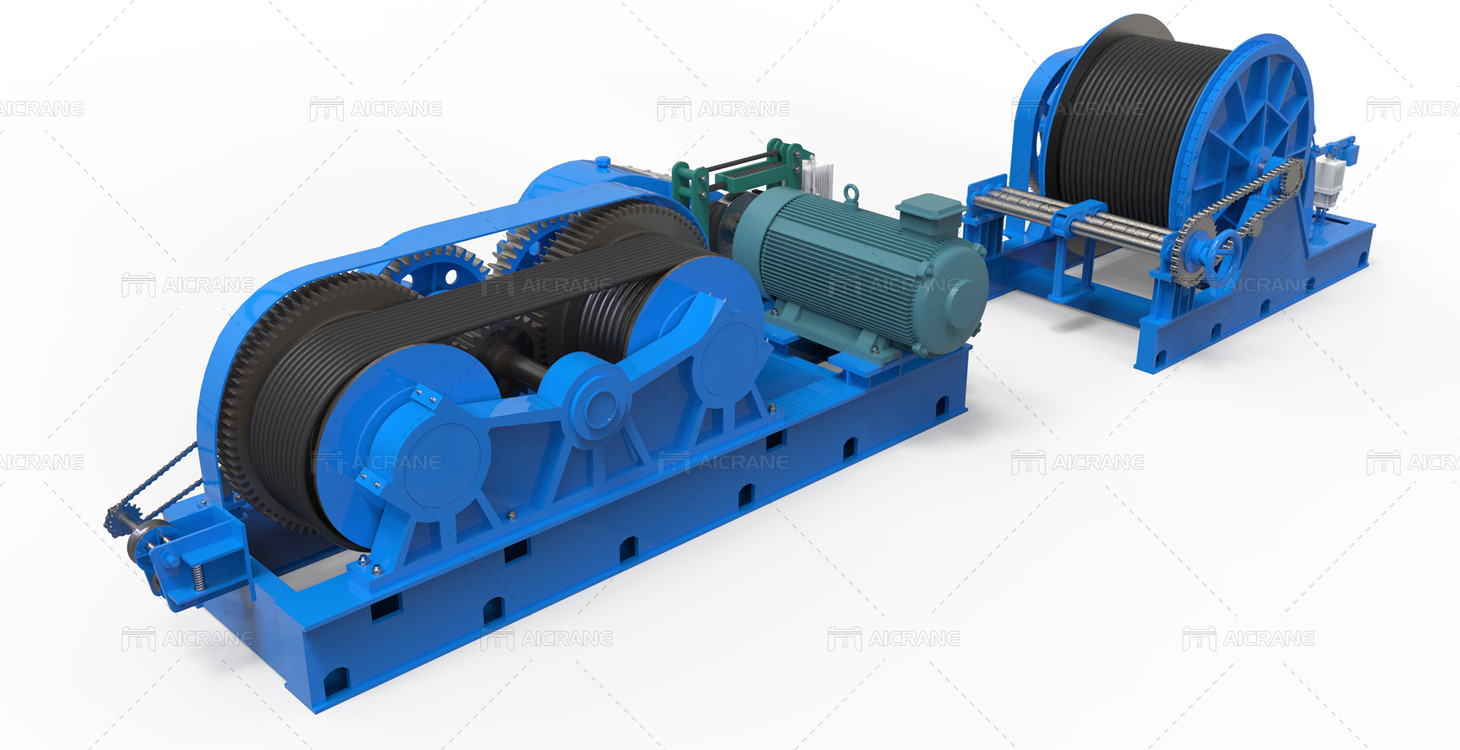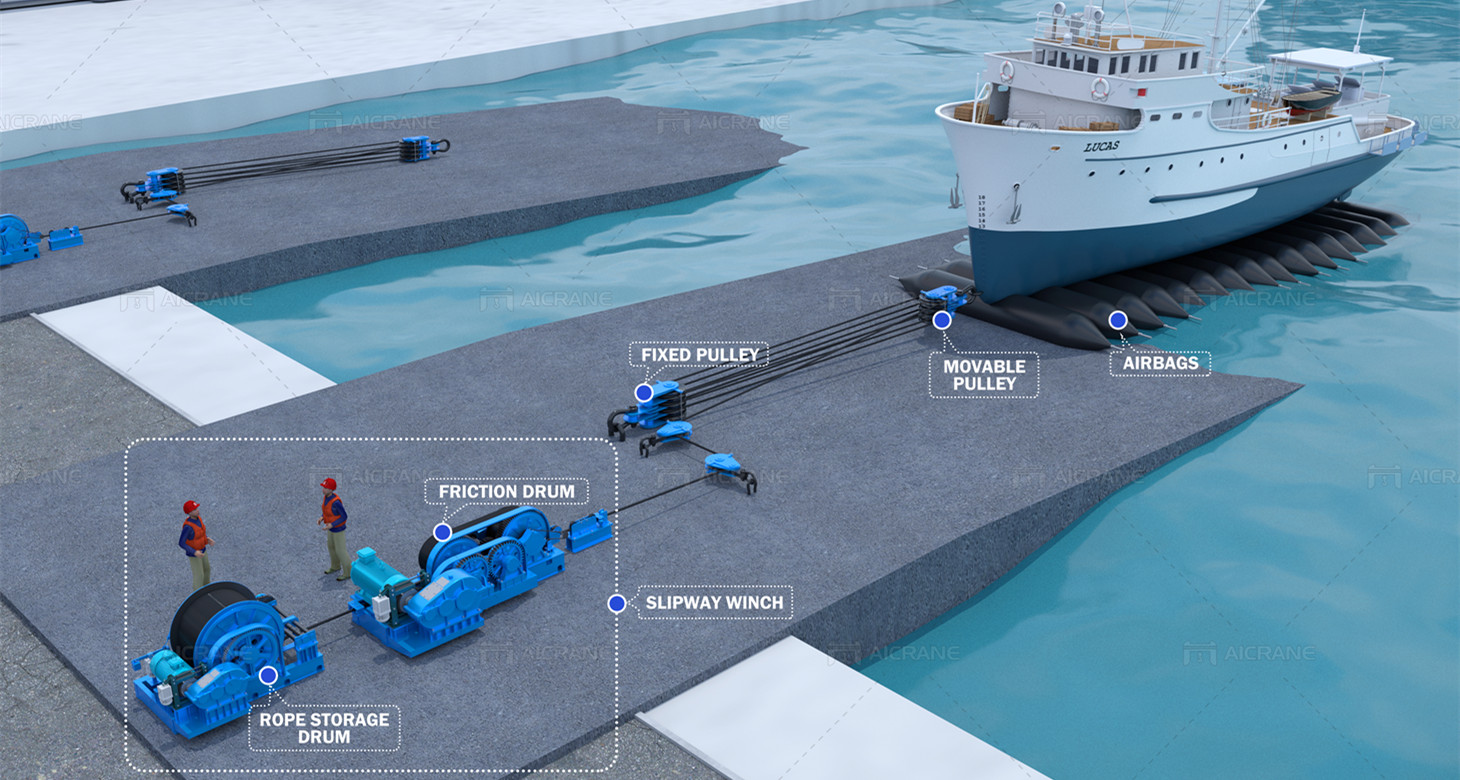Operating boat slipway winches requires skill, precision, and adherence to safety protocols to ensure the safe launching and retrieval of boats or vessels. Boat slipway winches, also known as marine hoists or boat lifts, are essential equipment in marinas, shipyards, and waterfront facilities, used for moving boats between land and water. Proper operation of these winches is critical to prevent accidents, damage to vessels, and injuries to personnel. In this comprehensive guide, we’ll explore the key steps and considerations for operating boat slipway winches safely and effectively.

Pre-Operational Checks
Before operating a boat slipway winch, conduct a thorough pre-operational inspection to ensure that the equipment is in proper working condition and ready for use. Inspect the winch and its components, including cables, pulleys, brakes, and controls, for any signs of damage, wear, or corrosion.
Verify that all safety devices and emergency stop mechanisms are functioning correctly and readily accessible. Check the condition of the winch’s electrical system, including wiring, switches, and connections, to ensure proper operation and compliance with electrical safety standards.
Inspect the area around the slipway and waterline for any obstacles, debris, or hazards that may interfere with winch operation or pose a risk to vessels during launching or retrieval. Clear any obstructions and ensure that the slipway is clear and safe for use before proceeding with winch operations.
Familiarize Yourself with Controls
Before operating the boat slipway winch, familiarize yourself with the controls and operating procedures to ensure safe and efficient operation. Identify and understand the function of each control, switch, lever, and indicator on the winch control panel or console.
Learn how to operate the winch controls smoothly and precisely to control the speed, direction, and tension of the cable during launching and retrieval operations. Practice using the controls in a controlled environment to develop proficiency and confidence in operating the winch safely.
Prepare the Boat and Slipway
Before launching or retrieving a boat using the slipway winch, ensure that the boat is properly prepared and secured for the operation. Verify that the boat’s hull is clean, free from debris, and properly balanced to prevent instability or tilting during movement.
Inspect the boat’s hull, keel, and propeller for any signs of damage, leaks, or fouling that may affect its seaworthiness or maneuverability. Secure loose items and equipment on board the boat to prevent them from shifting or falling during the launching or retrieval process.
Position the boat on the slipway or cradle, ensuring that it is aligned correctly and securely supported to prevent shifting or tipping during marine winch operations. Use chocks, blocks, or straps to stabilize the boat and prevent it from rolling or sliding on the slipway during launching or retrieval.

Operate the Winch
Once the boat and slipway are prepared, carefully operate the boat slipway winch to launch or retrieve the boat from the water. Follow these steps to ensure safe and efficient winch operation:
Engage the winch’s brake and release any tension on the cable before attaching it to the boat’s bow or stern fittings. Use appropriate rigging techniques and attachments, such as bow lines, stern lines, or lifting straps, to secure the boat to the winch cable securely.
Gradually apply tension to the winch cable using the control lever or switch, taking care to maintain steady and controlled movement of the boat along the slipway. Monitor the boat’s position and alignment relative to the slipway to ensure smooth and straight movement during launching or retrieval.
Adjust the winch speed and tension as needed to match the boat’s weight, size, and hull shape, as well as the slope and condition of the slipway. Use slower speeds and lower tension settings for larger or heavier boats, steep or slippery slipways, or adverse weather conditions to ensure safe and controlled movement.
Communicate with ground personnel or boat operators to coordinate winch operations and ensure that the boat is safely launched or retrieved from the water. Use hand signals, verbal commands, or two-way radios to maintain clear and effective communication during the operation.
Monitor the winch and cable for any signs of overheating, binding, or excessive wear during operation, and take corrective action if necessary. Stop the winch immediately if you encounter any issues or anomalies and inspect the equipment for damage or malfunction before resuming operation.
Post-Operational Checks
After completing the boat launching or retrieval operation, conduct post-operational checks to ensure that the equipment is properly secured and that the slipway is clear and safe for future use. Follow these steps to complete the post-operational checks:
Secure the boat to the slipway or cradle using appropriate mooring lines, chocks, or supports to prevent it from shifting or rolling. Verify that the boat is securely anchored and stable on the slipway before releasing tension on the winch cable.
Inspect the winch and cable for any signs of damage, wear, or corrosion that may require maintenance or repair. Lubricate moving parts, inspect electrical connections, and clean the winch and control panel to ensure proper functioning and longevity of the equipment.
Clear the slipway of any debris, equipment, or obstacles that may pose a hazard to future operations or vessels. Store winch controls, rigging gear, and safety equipment in a secure and accessible location for future use.
Document any issues, incidents, or observations encountered during the operation and report them to appropriate personnel or authorities for follow-up and resolution. Conduct debriefing sessions with operators and ground personnel to review the operation, identify lessons learned, and implement any necessary improvements or corrective actions.
In conclusion, operating boat slipway winches requires careful planning, preparation, and execution to ensure safe and efficient launching and retrieval of boats or vessels. By following the steps and considerations outlined in this guide and adhering to safety protocols and best practices, operators can minimize risks, prevent accidents, and maintain a safe working environment for all personnel involved in slipway operations. Get more tips from your winch manufacturer.
